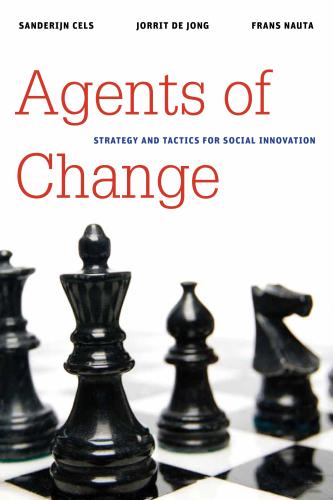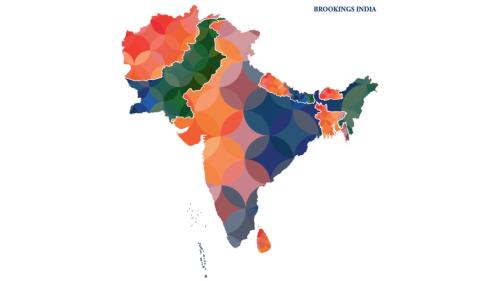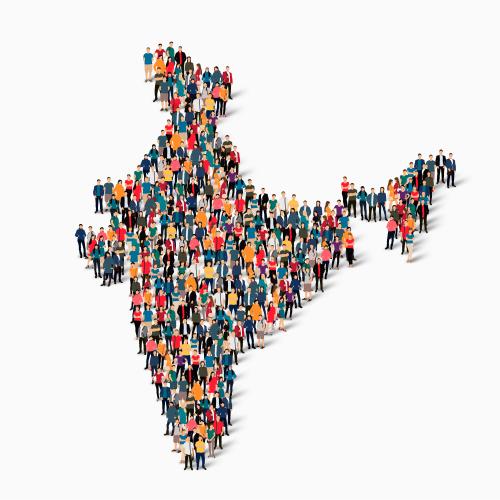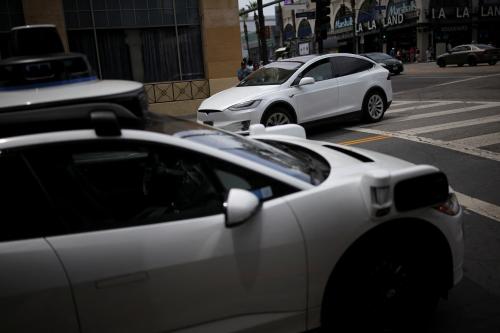Content from the Brookings Institution India Center is now archived. After seven years of an impactful partnership, as of September 11, 2020, Brookings India is now the Centre for Social and Economic Progress, an independent public policy institution based in India.
The Development Seminars @ Brookings India series is a platform for global scholars to present their work to a curated audience of senior government officials, policy makers, journalists, academics and policy enthusiasts. The fundamental focus of the seminar series is to draw research-based insights to shape and influence policy dialogues in India, through purposeful and pointed discussions.
There are more mobile phones than people on this planet, Facebook now has 2 billion monthly users, and over 93 per cent of India’s adult population now has access to a unique Aadhaar identity. With critical data pools lying with governments and social media networking sites, building, bridging and bolstering trust in our digital environment becomes central to our very existence.
With this in mind, Bhaskar Chakravorti, Associate Dean of International Business & Finance at The Fletcher School at Tufts University and Brookings India nonresident Senior Fellow spoke at the Brookings Institution India Centre on the March 23, 2018, as part of the Development Seminar @ Brookings India Series.
As technology gets intertwined with daily survival, we as citizens get exposed to different digital faultlines. Something as simple as reverse engineering of the Google algorithm can lead to websites taking the top ranks in our searches, often for several minutes or hours, thereby potentially influencing millions of visitors. From election results to the Brexit vote, information placed online has the power to influence and shape history like never before.
Alongside, governments play an enormously influential role in shaping the digital planet by collecting data on their citizens, using artificial intelligence, public databases, online search histories and social media profiles. As technology and automation advance, their impact on the future of work and jobs becomes ever important. Citizens are slowly getting exposed to the harsh realities of disruptive technology, digital footprints and their influence on our daily lives.
By 2024, India could aspire to and reach today’s China by prioritising and directing policy initiatives on four key-levers: improving physical infrastructure, expanding digital access availability, bringing more women online and investing in research and development.
Chakravorti’s own research has focused on developing a Digital Evolution Index, an indicator that measures the digital competitiveness of countries. Ranking 60 countries on a variety of digital indicators, the Digital Evolution Index analyses hundreds of indicators across four main buckets: Supply-side, demand-side, institutional environment, and innovation and change.
By mapping how countries score in digital evolution on the vertical dimension, and mapping the rate of digital momentum on the horizontal axis, the index maps our digital planet.

Countries fall into four zones: Stand Out, Stall Out, Break Out, Watch Out. Stand Out countries exhibit high momentum alongside high digital advancements; they drive innovation but face issues in maintaining high momentum over time. Stall Out countries enjoy a high state of digital advancement but exhibit slow momentum. They are referred to as countries that have developed ‘digital arthritis.’ Watch Out countries face low states of digitalisation and low momentum, scoring poorly in internet access and mobile penetration. Break Out countries score low in the state of digitalisation but enjoy high momentum and evolution.
Consisting largely of Latin America and Asia, Break Out countries exhibit strong demands and momentum but are yet to achieve potential. What the future looks like for these countries may not be predictable but what remains certain is that Break Out are where future investments in digital systems are expected to place. In this view, investing for change in institutional and innovation environments in these countries would really help them achieve the digital potential many of them are ready for.
In the Indian context, where demand for momentum remains strong and significant headroom for growth is expected, closing supply gaps remains crucial in accelerating digital momentum.
The analysis of digital evolutions yields several implications for both public- and private-sector leaders as they explore ways to enhance the state of the digital economies across the world. Fundamentally, the building of digital trust remains central. Our digital evolution and our productive use of new technologies rests on how well we can build digital trust.
So, how the givers and guarantors of trust interact in the digital world defines digital trust. Trust reduces several types of friction in a transaction between givers and guarantors. This friction can take many forms and can have different causes from infrastructural to poor design and functionality to regulatory or legal requirements to data security measures. When translated, it gives different scores that measure trust.
On mapping and comparing digital trust across countries Chakravorti found Indians to demonstrate high tolerance for such frictions in their everyday digital interactions. Indians scored very high in patience in online engagements but very poorly in security, accountability and privacy. Even though India’s digital trust environment scores hug the median, it has a significant digital experience gap to close, his study found.
Digital experience in India is marked with high and persistent friction which remains the key barrier in lowering transaction costs in India’s digital economy. And while users in high digital momentum countries like India are more likely to overlook poor digital experiences and environments, this scenario is unlikely to last as the market develops and as and when trust relationships are weakened or broken in digital contexts such as data leaks, thefts of online banking data and so on.
This is where digital catch up comes into play in the conversation – how long and what will it take for India to catch up to benchmarks set by similar, but more digitally advanced countries? Chakravorti believes that by 2024, India could aspire to and reach today’s China by prioritising and directing policy initiatives on four key-levers with the greatest multiplier effects: improving physical infrastructure, expanding digital access availability, bringing more women online and investing in research and development.
All this boils down quite aptly to the topic of the Seminar – So while Digital India Sounds Lovely, do we Trust the Digital Planet?
Download Chakravorti’s presentation. Details of the Development Seminar @ Brookings India.
The Brookings Institution is committed to quality, independence, and impact.
We are supported by a diverse array of funders. In line with our values and policies, each Brookings publication represents the sole views of its author(s).










Commentary
What India can do to build, bridge and bolster digital trust
March 27, 2018